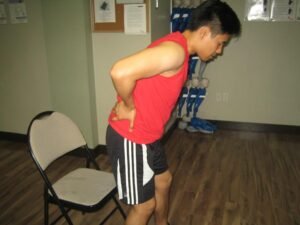Majority of the pelvic muscles are situated on the interior lining of the pelvis bone including the piriformis, pubococcygeus, obturator internus and externus muscles. These external muscles are usually connected to the pelvis as well as other bones. Some of these include the hip, buttocks, hip to knee and the thighs. Take note that there are abdominal as well as back muscles which are attached to the pelvis. Pelvic muscle pain will readily affect these muscles and the pain can originate from any of these muscles. The first aid care and treatment for pelvic muscle pain typically includes the administration of medications, rest and rehabilitation exercises. It is important to enroll in a first aid course so that you are fully prepared.

Considerations to bear in mind
The exact nature of the pelvic muscle pain is difficult to determine. The pain cannot be caused by the pelvic or surrounding muscles. Women can oftentimes suffer from infections or pain in the bladder since the ovaries and fallopian tube radiates to this area. In some cases, there is lower spinal pain since some of the vertebrae extend within the pelvic area. Additionally, the same spinal nerves can affect the internal organs also control the impulses from the bones and muscles, thus an MRI is required to come up with a proper diagnosis.
Pelvic muscle pain is typically identified by certain characteristics or activities. If the individual has a history of this type of pain, there is a chance that the pain is muscular. The individual might also sustained a sports injury in the pelvic muscle. The pain is also muscular if the physical activity will worsen the pain. The pelvic muscle pain will oftentimes result to the feebleness or numbing feeling that tends to differ throughout the day.
What are the effects of ice, rest and heat?
Take note that rest can help soothe the muscles and avert further injury or pain. The application of ice results to vasoconstriction which minimizes the inflammation and pain by limiting the blood flow and lymph fluid into the affected area. Ice is considered highly effective once it is compressed to the exact location of the pain at 20-minute intervals throughout the day. The moment the swelling or pain subsided, the application of heat can promote blood flow to the affected area.
Other modes of treatment
Administration of anti-inflammatory medications which includes naproxen and ibuprofen can help lessen pelvic muscle pain and minimize the inflammation. For severe cases of pelvic muscle pain caused by injuries, steroids are given by injection or mouth.
Physical therapy is also recommended for pelvic pain. In most cases, therapists will begin with the simple stretching exercises in order to help relax the muscles and get them accustomed to movement. After some time, light weight lifting or resistance training can be included to promote the healing process.
Massage can even promote the relaxation of the muscles as well as relieve the tension. Other modes of treatment include transcutaneous electrical nerve stimulation (TENS) and biofeedback in relieving chronic pain.
The ideal time frame of treatment
When overcoming pelvis muscle pain, there is no set time frame. Any pain that is linked with sports injury or accident will take months to fully heal. Nevertheless, individuals who take on the proactive approach to their treatment are expected to heal more quickly.
